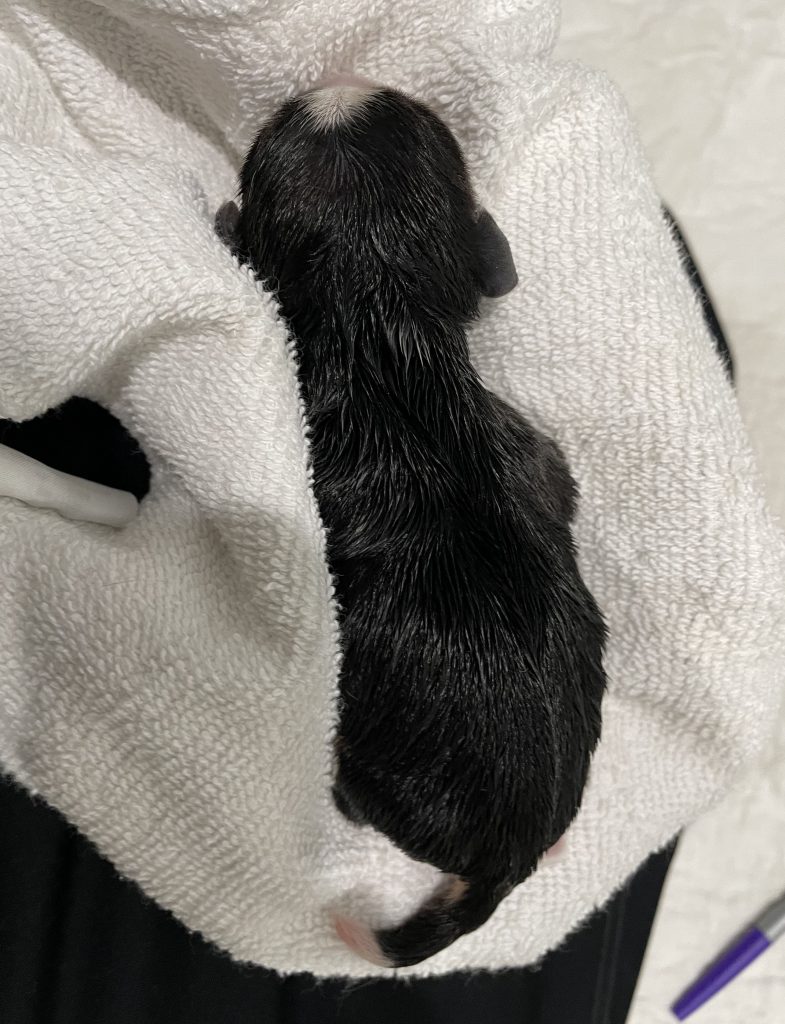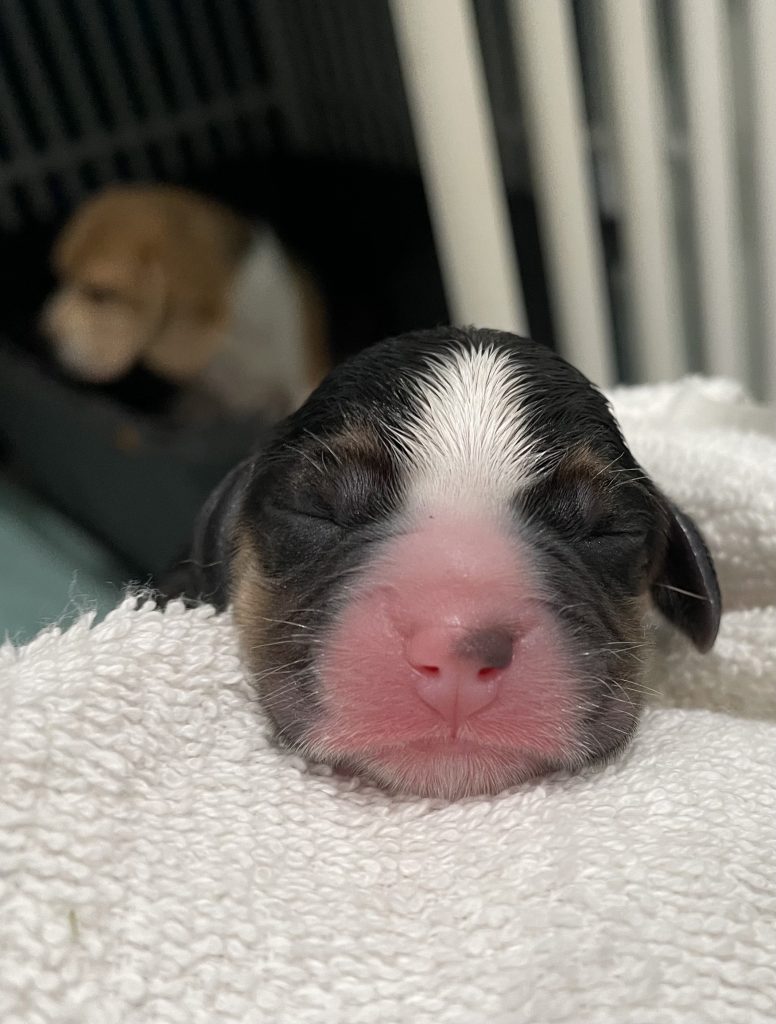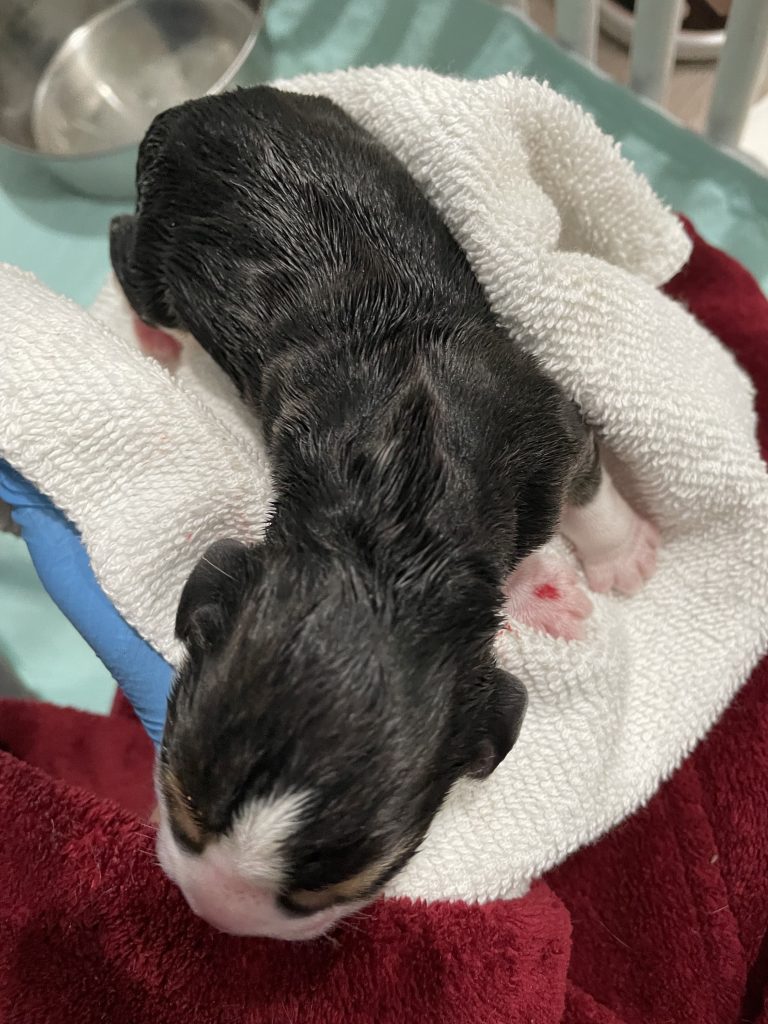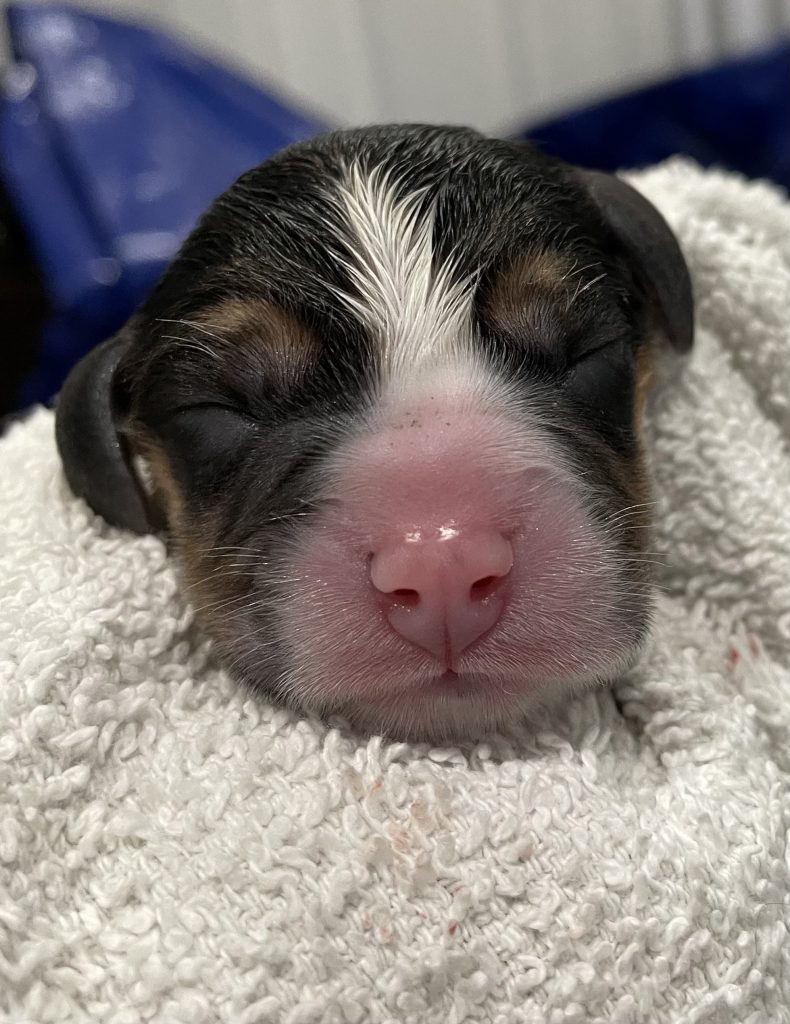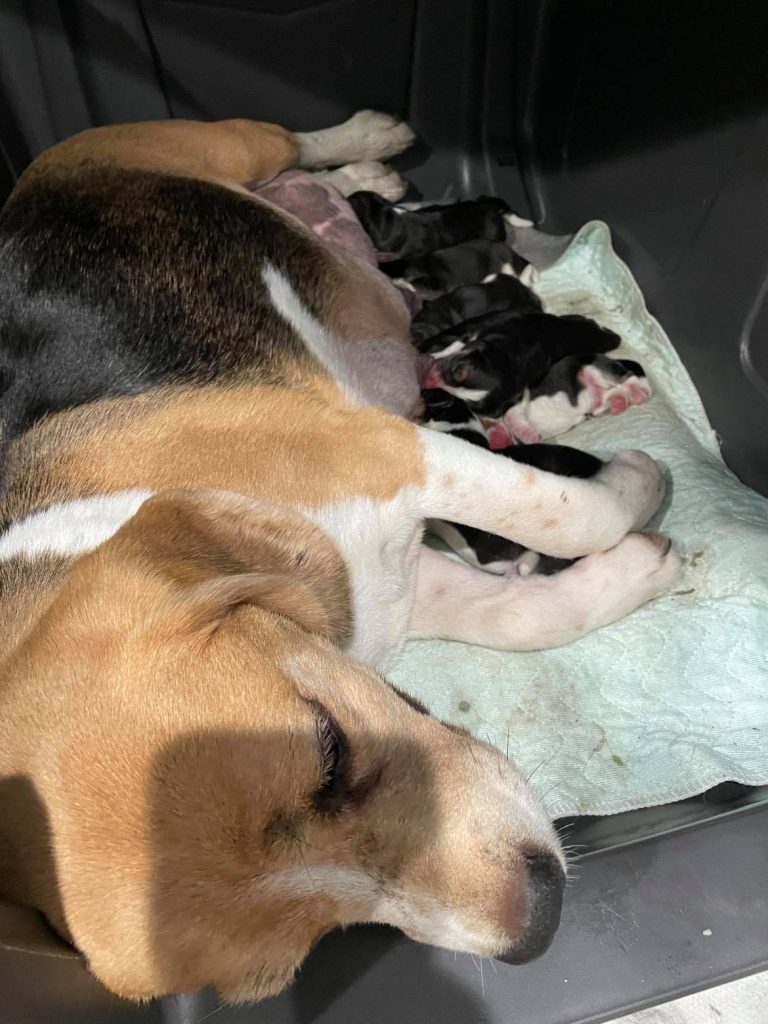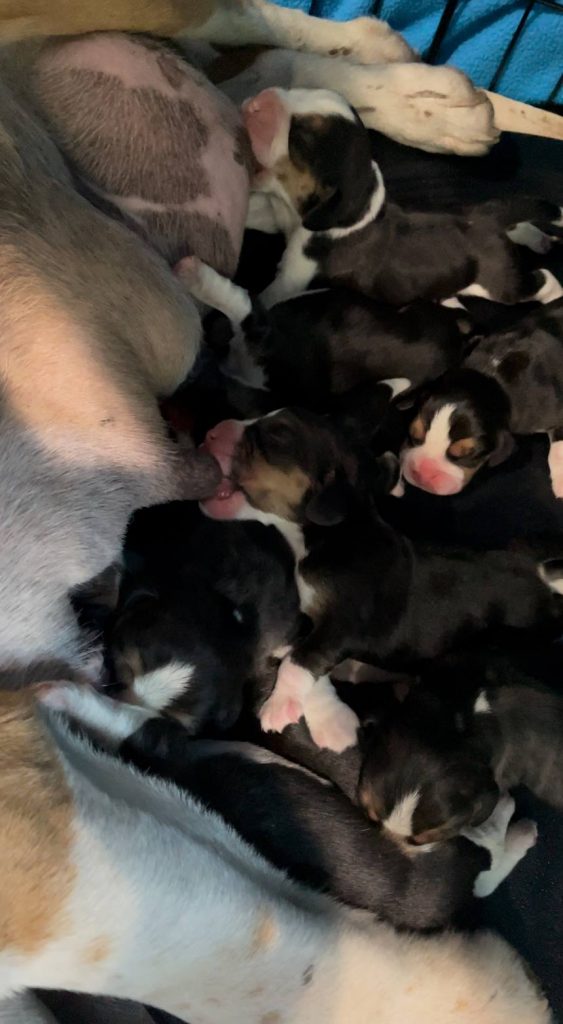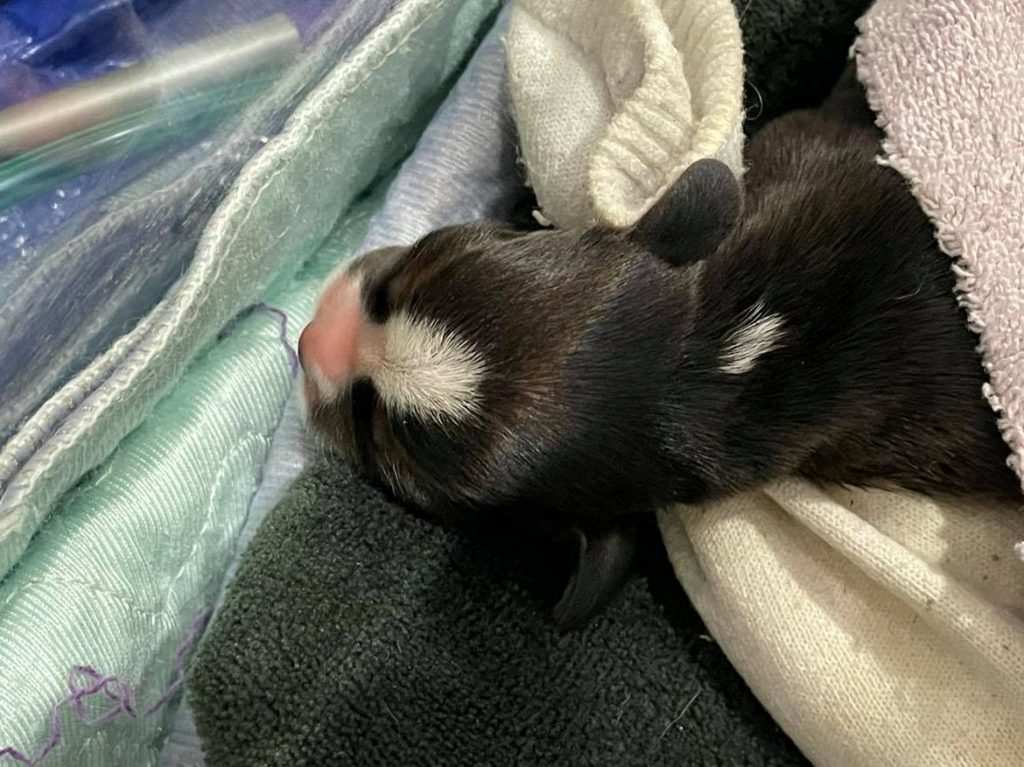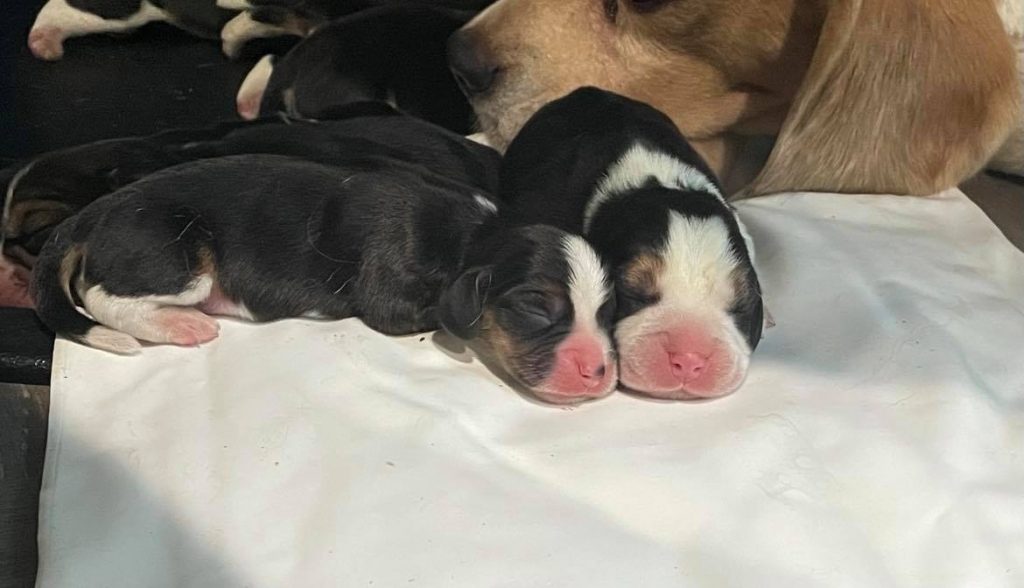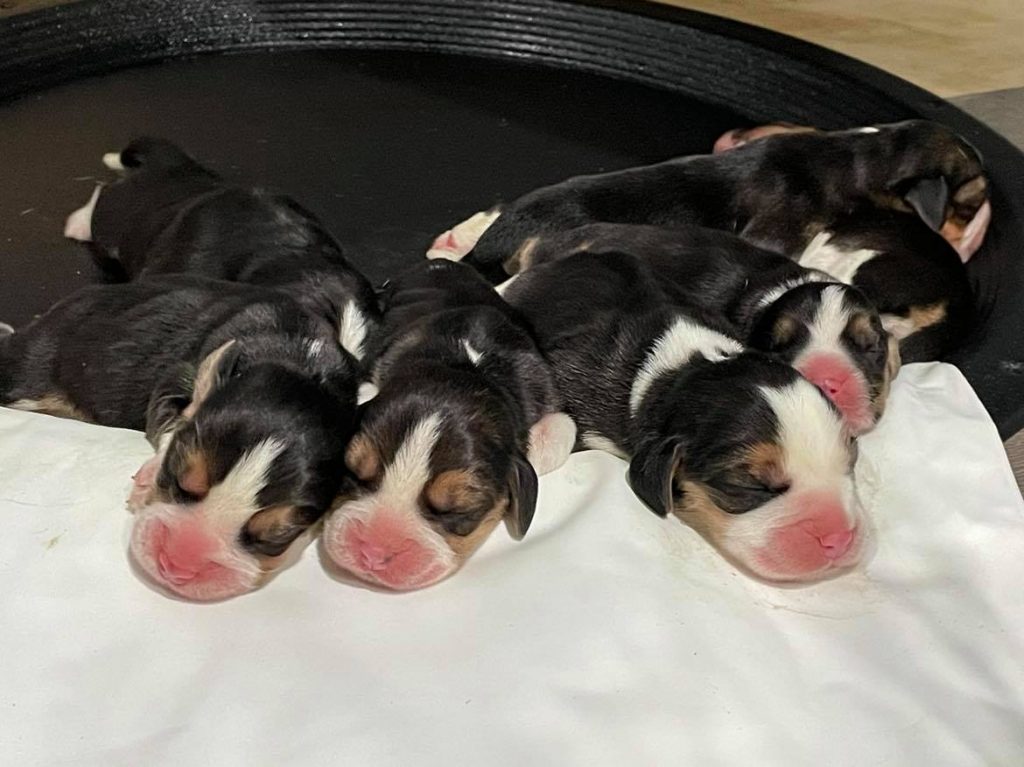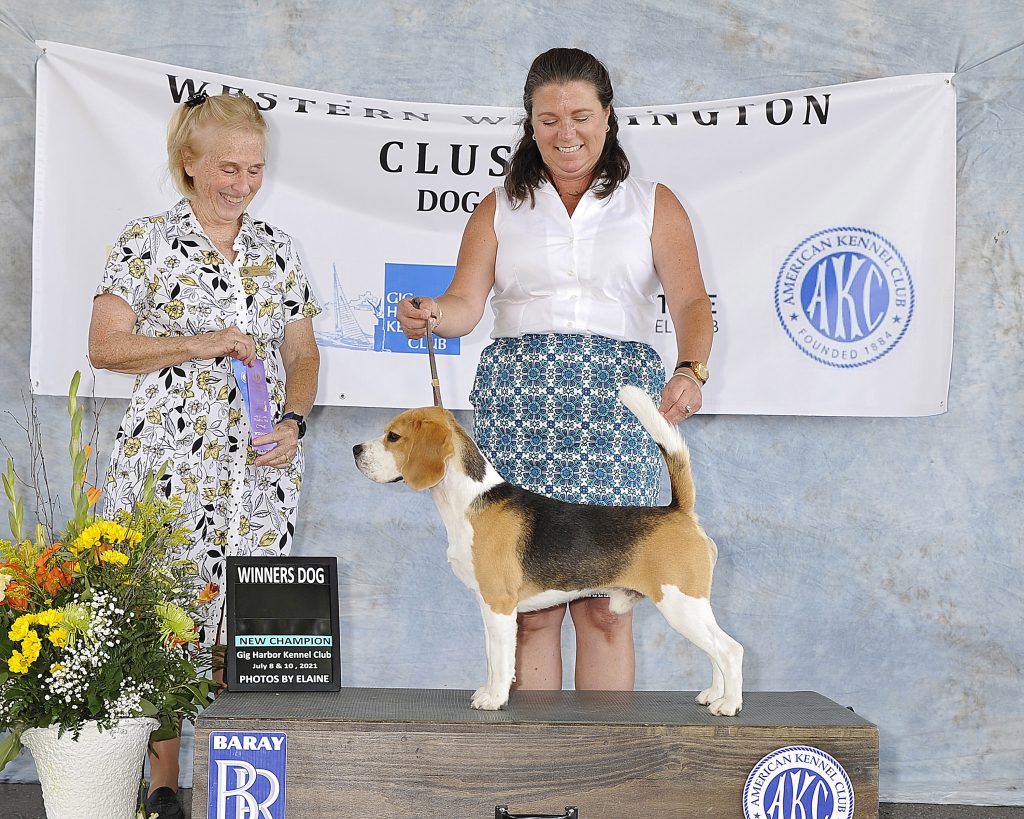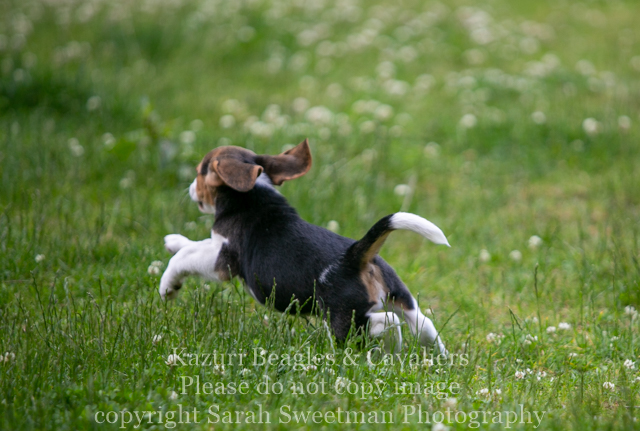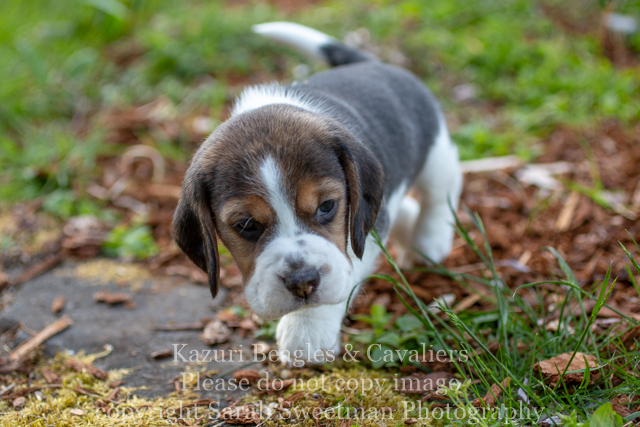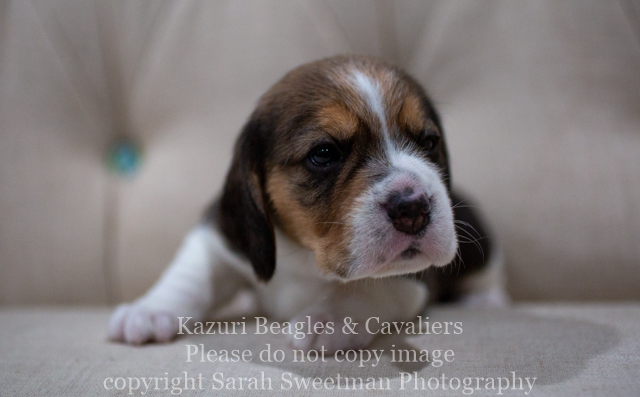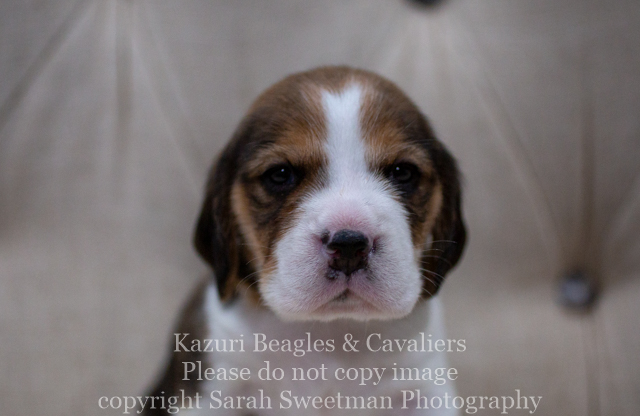Late night on the 21st, I noticed that Pud was panting a little bit. Her temperature hadn’t dropped and she had eaten a full dinner, but it still made me think that the beginning of labor was certainly close.
I woke up every hour and a half through the night to keep an eye on her. She didn’t get much sleep. Poor girl was rather large and between her giant belly, need to pee constantly and the panting, she was needing to sleep sitting up. Remembering labor myself, I understood completely.
The next morning, her temperature went down to 97.6 and I knew we were in business. She was definatly in stage one.
We left her in her whelping area, so she could pace or sleep or rearrange the bedding as she pleased without the bother of anyone around. Luckily we have cameras and so i was able to watch her all day and I checked on her every hour. We took her for regular gentle walks and potty breaks and gentle head rubs. She was happy and content.
The only thing I kind of objected to was Pud decided she really liked laboring under a toddler structure in the side yard – she made a little hole while no doubt felt lovely and cool to lay in, but it made me so nervous to have her out there.
Around midnight things intensified and her watersac appeared, and quickly she gave birth to a little baby GIRL. She was in love and we were grateful that baby #1 was here safe and sound. She was 7.23oz. I felt this was a very respectable size considering how many we were expecting.
Baby #2 was a BOY – he was 3oz bigger at 10.26oz. Ironically he was born outside (remember how I told you about her obsession with that toddler structure??). Thankfully I had brought towels and scissors out to our potty break as I had a weird hunch she might want to push a baby out there – he didn’t even touch the ground. But, not my favorite place to whelp. His size surprised me. Big boy for 8 babies. Would he be the largest – time would tell.
Baby #3 was another GIRL – 10.16oz. Lovely straightforward birth – just how we like them.
Baby #4 was another GIRL – 10.41oz. I was starting to think the Heavens were smiling on us as breeders. And, I was starting to see a pattern of dark bodies and giant babies as the norm 😛 HAHA.
Baby #5 was another GIRL – 11.04oz – she was also born outside and was a dry birth. I was prepared, just as I was last time, but a dry birth is hard on momma so I hoped I would not have to repeat that.
Baby #6 was a BOY – 10.37oz and a very easy straightforward birth. Grateful for those. Pud was starting to get tired so I reminded her we were nearly done – just two more baby girl.
Baby #7 was a BOY – 11.39oz. This was another dry birth and his shoulders got stuck for about 15 mins. I am very thankful to my husband Steve, who I dragged out of bed at 6:30am, to help me gently pull this baby out. He was very blue/purple and I thought we had lost him but after many minutes of vigorous rubbing he was squeaking and moving around. I shed many tears of adrenaline and thankfulness.
Baby #8 was a GIRL. Her birth story was almost identical to the boy before her – I will forever be grateful to Steve and his long fingers for being able to get up into the pelvic bone and inch those babies forward – my fingers just weren’t long enough to grab them.
So, mama and babies all settled in. Pud has the most giant nipples and so the babies are all learning how to nurse off them – it’s quite the learning curve. The smallest baby has needed a little support – I am thankful I have an incubator / oxygen on hand. She gets a little colder since she gets pushed around by her bigger brothers and sisters. I will tube fed her a little bit and keep a vigilant watch over her. I think she will be just fine.
So, officially, they were born on the 23rd, since we had the first one arrive around 12:30am on the 23rd July. 🙂
**please note that none of these puppies are available as pets at this time. US breeders may enquire but we may or may not have anything available.**






